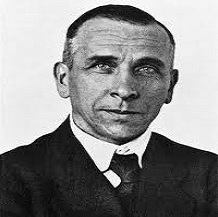Alfred Wegener Inventor of Continental Drift

Biography of Alfred Wegener
Early Life
Alfred Wegener Continental Drift idea floater was a geophysicist and he was born in Berlin, Germany 1st November, 1880 in house of a evangelical minister. After his early education, he studied in different universities for further study and he earned a doctorate degree in astronomy after studying in universities of Heidelberg and Berlin. In his life as a student he wanted to explore the life of Greenland and the wonders over there and this thing raised his interest in field of geophysics. On the other hand, he was very much interested in the field of meteorology which was very much unknown at that time for the common people.
Achievements
He was very much keen to the wonders of geophysics and as a result he was making preparations for an arctic expedition, which led him to practice of backbreaking exercise. After that, he started to fly by using balloons and kites to take exact and better observations of weather. In year of 1906, he completed a flight of almost 52 uninterrupted hours with his brother named as Kurt. His interest in meteorology was increasing as the time was passing and as a result he was selected for a Danish expedition. After returning back form this expedition, he started a job as a teacher of meteorology in the University of Marburg.
Further contributions
After the time span of some years, he published his first publication about atmosphere and thermodynamics. In year of 1912, he achieved a remarkable thing and that was he participated in an expedition in Greenland and this trip is considered the longest trip covered by feet through that icecap. On the other hand, he taught meteorology and geophysics in the University of Graz which is located in Austria in the year of 1926.
Inventor of Continental Drift
Wegener is the person who is considered to be the most important part and proponent of the continental drift theory. The main motive behind proposing this theory was about the continents which border the South Atlantic Ocean. He added further that, in Jigsaw fit, there is a possible connection between both of them if we see in paleontological perspective. Later on this theory was rejected by a number of people because they said that the topography of earth is compensated by presence of mostly irreversible continental crustal rocks. Several other links were found which were considering this theory very much important in the regard of continental drift.
Death
He conducted a third expedition in Greenland in 1930. During this expedition he faced a immense heart attack which led him to death. Alfred Wegener died in 1930 in a very young age of almost 50 years in Greenland. He is still remembered for his theory of continental drift which gave a new and unique dimension to the field of geophysics.


Leave a Reply